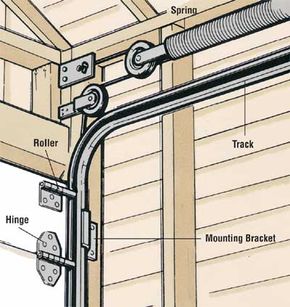Introduction: The Importance of DIY Garage Door Opener Maintenance
Owning a garage comes with the responsibility of maintaining its various components, and one crucial element is the garage door opener. Regular DIY maintenance not only ensures smooth operation but also extends the lifespan of your opener. In this guide, we’ll walk you through the essential steps to clean and maintain a garage door opener, empowering you to tackle this task with confidence.
1. Understanding the Basics of Garage Door Openers
Before diving into the maintenance process, it’s essential to understand the basics of how a garage door opener works. Familiarize yourself with the different types of openers, such as chain-driven, belt-driven, and screw-driven models. Knowing the key components will enable you to identify areas that require attention during the cleaning and maintenance process.
2. Safety First: Disconnecting the Opener
Prior to any maintenance work, prioritize safety by disconnecting the power to the garage door opener. Locate the emergency release cord and carefully pull it, disconnecting the opener from the door. This precautionary measure ensures that the door remains stationary while you perform the necessary cleaning and maintenance tasks.
3. Cleaning the Exterior and Interior Components
The external and internal parts of your garage door opener can accumulate dust and debris over time. Use a soft cloth or a gentle brush to clean the exterior surfaces, removing any dirt or cobwebs. For internal components, such as gears and chains, consider using a silicone-based lubricant to keep them well-lubricated. This prevents friction and ensures smooth operation.
4. Checking and Tightening Hardware
Regular usage can lead to the loosening of nuts, bolts, and other hardware components. Conduct a thorough inspection of the entire garage door opener, tightening any loose hardware you come across. This simple step can prevent potential malfunctions and ensure the stability of the opener during operation.
5. Testing the Safety Features
Garage door openers are equipped with safety features such as photoelectric sensors and auto-reverse mechanisms. Periodically test these features to ensure they are functioning correctly. Place an object in the path of the closing door to trigger the auto-reverse, and check if the sensors detect any obstructions. Ensuring these safety features work properly is vital for preventing accidents and injuries.
6. Lubricating Moving Parts
Proper lubrication is crucial for the smooth operation of your garage door opener. Focus on lubricating the chain or drive screw, as well as the rollers and hinges on the garage door itself. Use a high-quality lubricant recommended by the opener’s manufacturer. This step minimizes wear and tear on moving parts, reducing the risk of breakdowns.
7. Examining the Garage Door Balance
An imbalanced garage door puts additional strain on the opener and can lead to premature wear. Disconnect the opener and manually open the door halfway. If it doesn’t stay in place, the door is likely unbalanced. Adjust the tension of the springs as needed to ensure the door remains stable at the halfway point.
8. Addressing Unusual Noises
Unusual noises during operation can be indicative of underlying issues. Listen for any grinding, squeaking, or rattling sounds, as they may signal problems with the opener. Investigate the source of the noise and address it promptly to prevent further damage. Lubrication and tightening loose components often resolve these issues.
Conclusion: DIY Mastery for a Well-Maintained Garage Door Opener
Regular DIY maintenance is the key to a well-functioning and durable garage door opener. By understanding the basics, prioritizing safety, and following the steps outlined above, you can ensure that your garage door opener operates smoothly for years to come. For additional insights and tips on how to clean and maintain a garage door opener DIY, visit mimimises.org. Take control of your garage’s functionality and enjoy the convenience of a reliable door opener with these simple yet effective maintenance practices.

